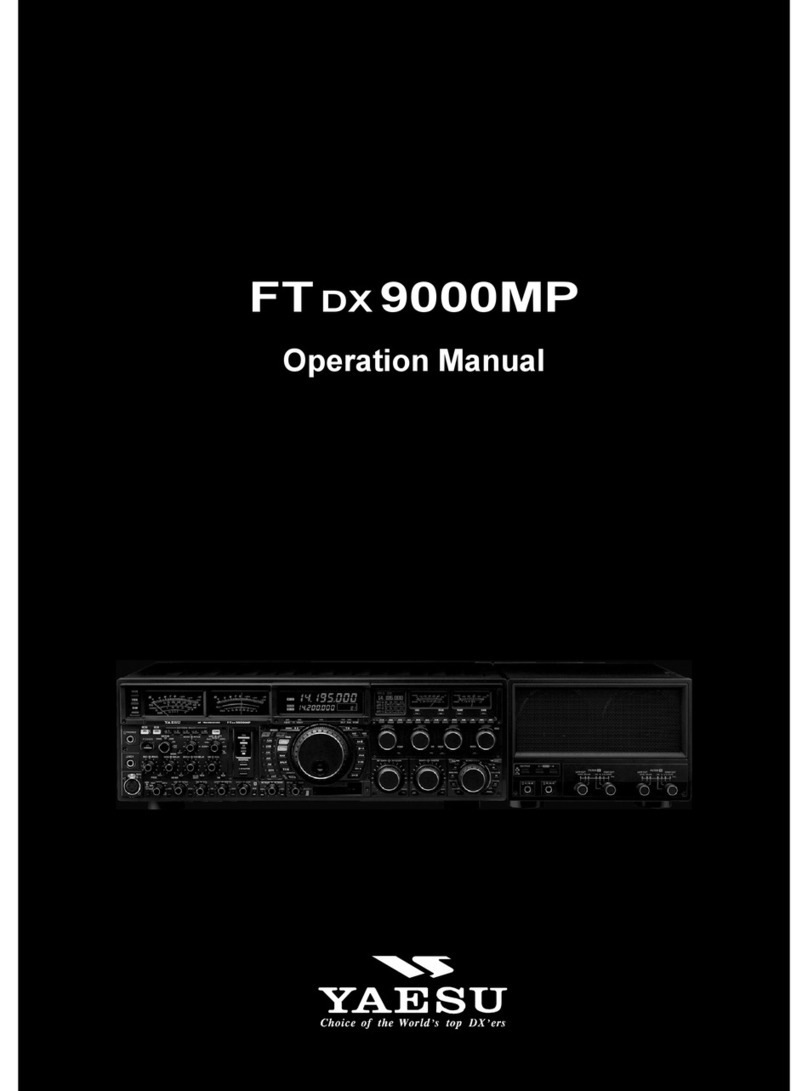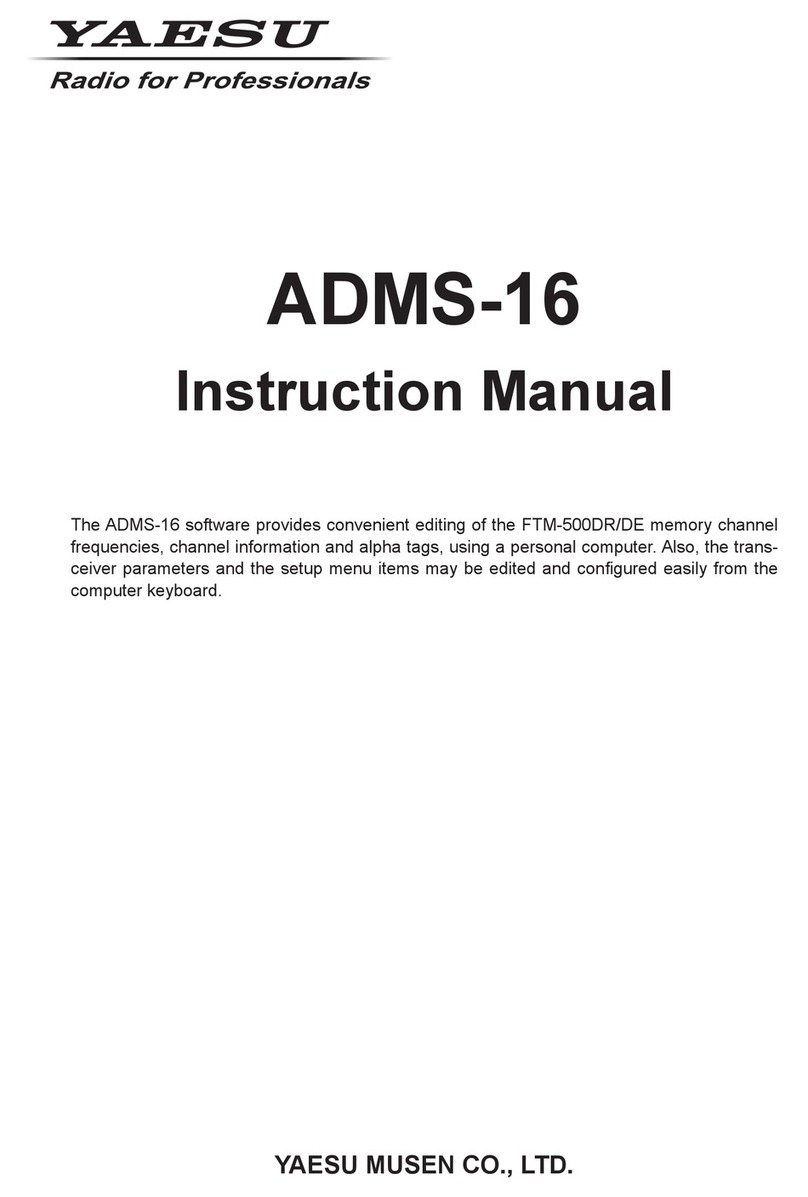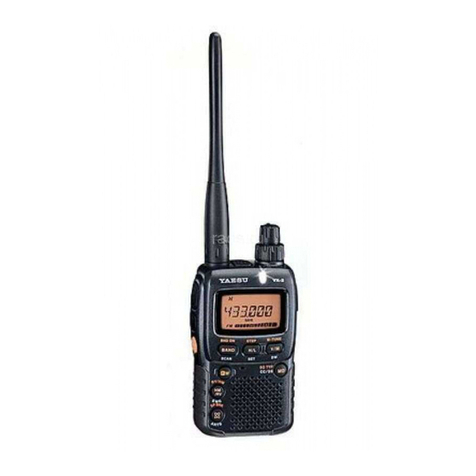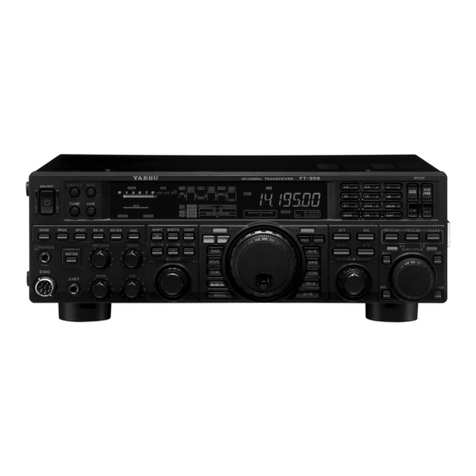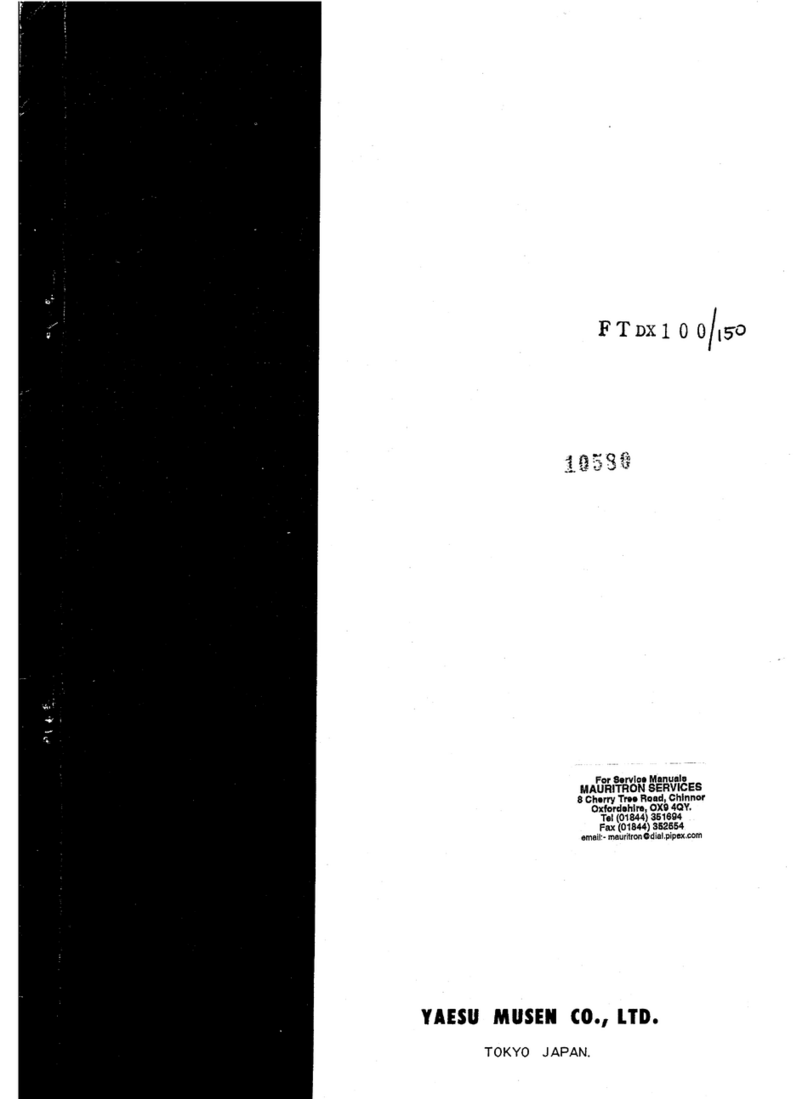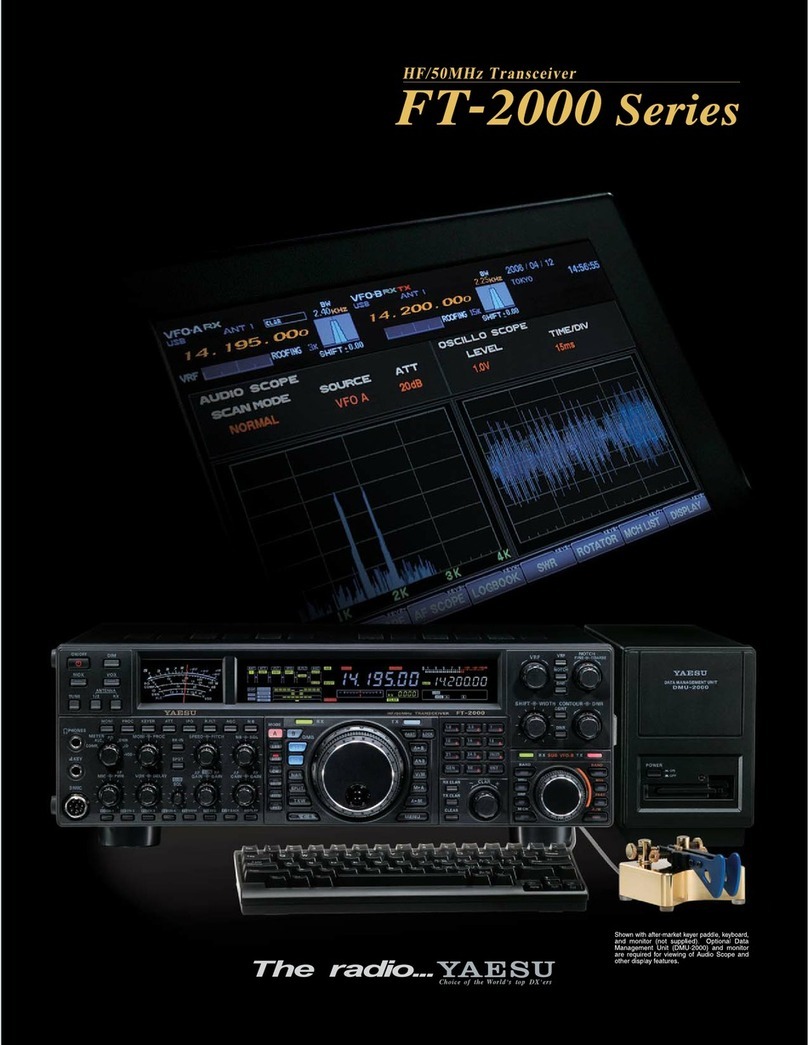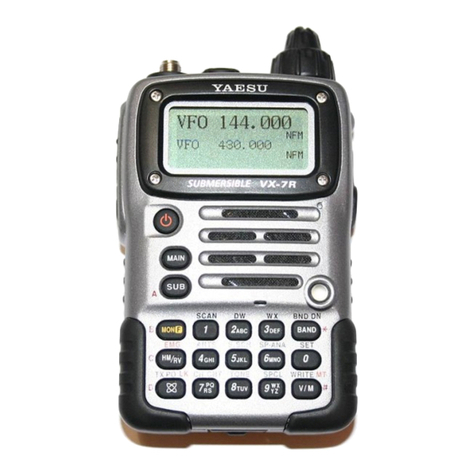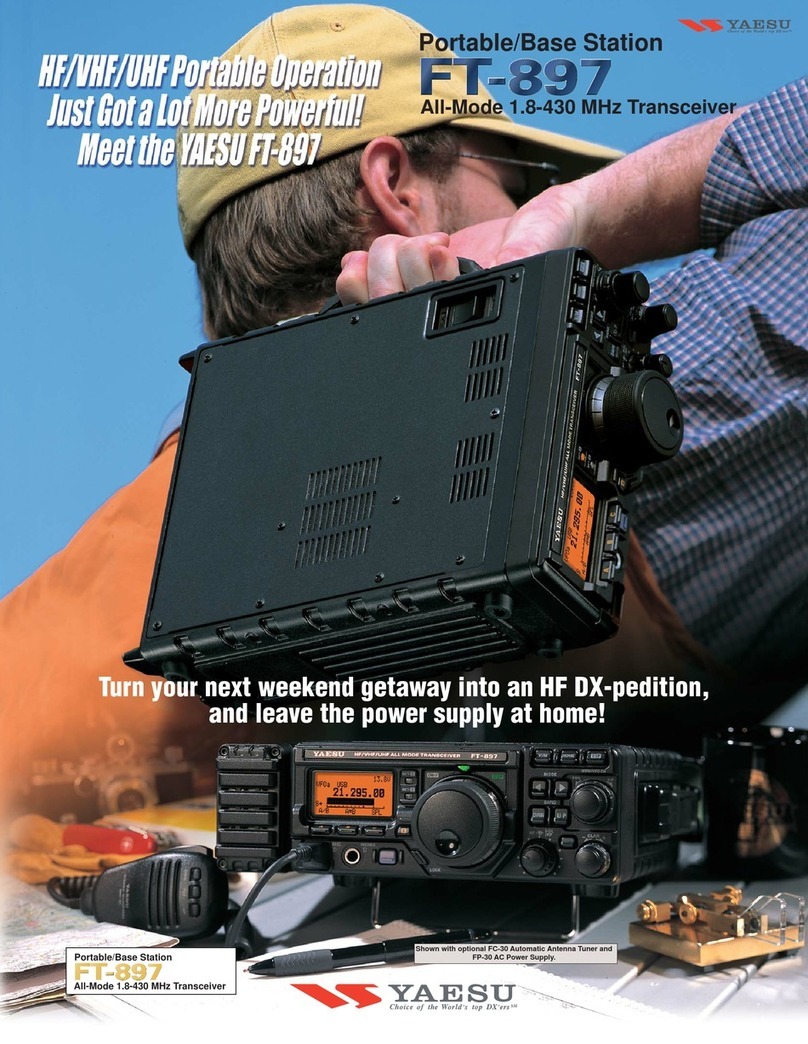
Page 3
FT-991 OperaTing Manual
table of contents
General Description ..................................................... 1
Table of Contents ......................................................... 3
Accessories & Options ................................................. 5
Supplied Accessories................................................ 5
Available Options..................................................... 6
Before You Begin.......................................................... 7
Base Station Wire Stand........................................... 7
Adjusting the Main Tuning Dial Torque .................. 7
Adjusting the Clock.................................................. 8
Inputting the Call Sign ............................................. 9
Resetting the Microprocessor................................. 10
Antenna Considerations ......................................... 11
About Coaxial Cable .............................................. 11
Grounding............................................................... 12
Connection of Antenna and Power Cables............. 13
Installation and Interconnections............................. 14
Connection of Microphone, Headphone and
Remote Control Keypad......................................... 14
Key, Keyer, and Computer-Driven Keying
Interconnections ..................................................... 15
VL-1000 Linear Amplier Interconnections.......... 16
Plug/Connector Pinout Diagrams........................... 17
Front Panel Controls & Switches ............................. 18
About the Display....................................................... 22
TFT Liquid Crystal Display ................................... 22
LED Indicators ....................................................... 24
Rear Panel................................................................... 25
MH-31A8J Microphone Switches............................. 27
Optional FH-2 Remote Control Switches ................ 28
Optional MH-36E8J Microphone Switches............. 29
Basic Operation: Receiving on Amateur Bands ...... 30
Operation on 60-Meter (5 MHz) Band
(U.S. and U.K. version only).................................. 33
CLAR (Clarier) Operation ................................... 34
LOCK..................................................................... 35
DIMMER ............................................................... 35
VFO COLOR ......................................................... 36
Convenience Features................................................ 37
Band Stack Operation............................................. 37
C.S (Custom Switch).............................................. 37
AMS (Automatic Mode Select) Operation............. 38
SCOPE ................................................................... 40
More Frequency Navigation Techniques ............... 42
Receiver Operation (Front End Block Diagram) ... 44
Interference Rejection ............................................... 45
ATT (Attenuator).................................................... 45
IPO (Intercept Point Optimization) ........................ 46
IF Noise Blanker (NB) Operation .......................... 47
CONTOUR Control Operation .............................. 48
IF SHIFT Operation
(SSB/CW/RTTY/PKT Modes)............................... 49
WIDTH (IF DSP Bandwidth) Tuning
(SSB/CW/RTTY/DATA Modes) ............................ 50
NARROW (NAR) One-Touch IF Filter
Selection................................................................. 52
IF NOTCH Filter Operation
(SSB/CW/RTTY/DATA/AM Modes) .................... 53
Digital NOTCH Filter (DNF) Operation................ 54
Digital Noise Reduction (DNR) Operation............ 54
Tools for Comfortable and Effective Reception ...... 55
RF Gain .................................................................. 55
Audio Peak Filter ................................................... 56
AGC (Automatic Gain Control)............................. 57
Adjustable Receiver Audio Filter........................... 58
SSB/AM Mode Transmission .................................... 59
Using the Automatic Antenna Tuner ........................ 61
ATU Operation ....................................................... 61
About ATU Operation ............................................ 62
Enhancing Transmit Signal Quality......................... 63
Parametric Microphone Equalizer
(SSB/AM/FM mode).............................................. 63
Using the Speech Processor (SSB Mode) .............. 66
Adjusting the SSB Transmitted Bandwidth
(SSB Mode)............................................................ 67
Transmitter Convenience Features .......................... 68
Voice Memory (SSB/AM modes) .......................... 68
VOX (SSB/AM/FM Modes: Automatic TX/RX
Switching using Voice Control) ............................. 70
MONITOR (SSB/AM/FM modes)......................... 72
Split Operation Using the TX Clarier .................. 73
Split-Frequency Operation ..................................... 74
CW Mode Operation ................................................. 76
Setup for Straight Key
(and Straight Key emulation) Operation ................ 76
Using the Built-in Electronic Keyer....................... 78
CW Convenience Features ........................................ 82
CW Spotting (Zero-Beating) .................................. 82
CW Delay Time Setting ......................................... 83
CW Pitch Adjustment............................................. 83
Contest Memory Keyer .......................................... 84
FM Mode Operation .................................................. 91
Basic Operation ...................................................... 91
Repeater Operation................................................. 92
Tone Squelch Operation ......................................... 94
C4FM Mode (Digital Mode) Operation ................... 95
Memory Operation .................................................... 97
Convenient Memory functions............................... 97
QMB (Quick Memory Bank) ................................. 97
Standard Memory Operation.................................. 98
Memory Groups ................................................... 104




